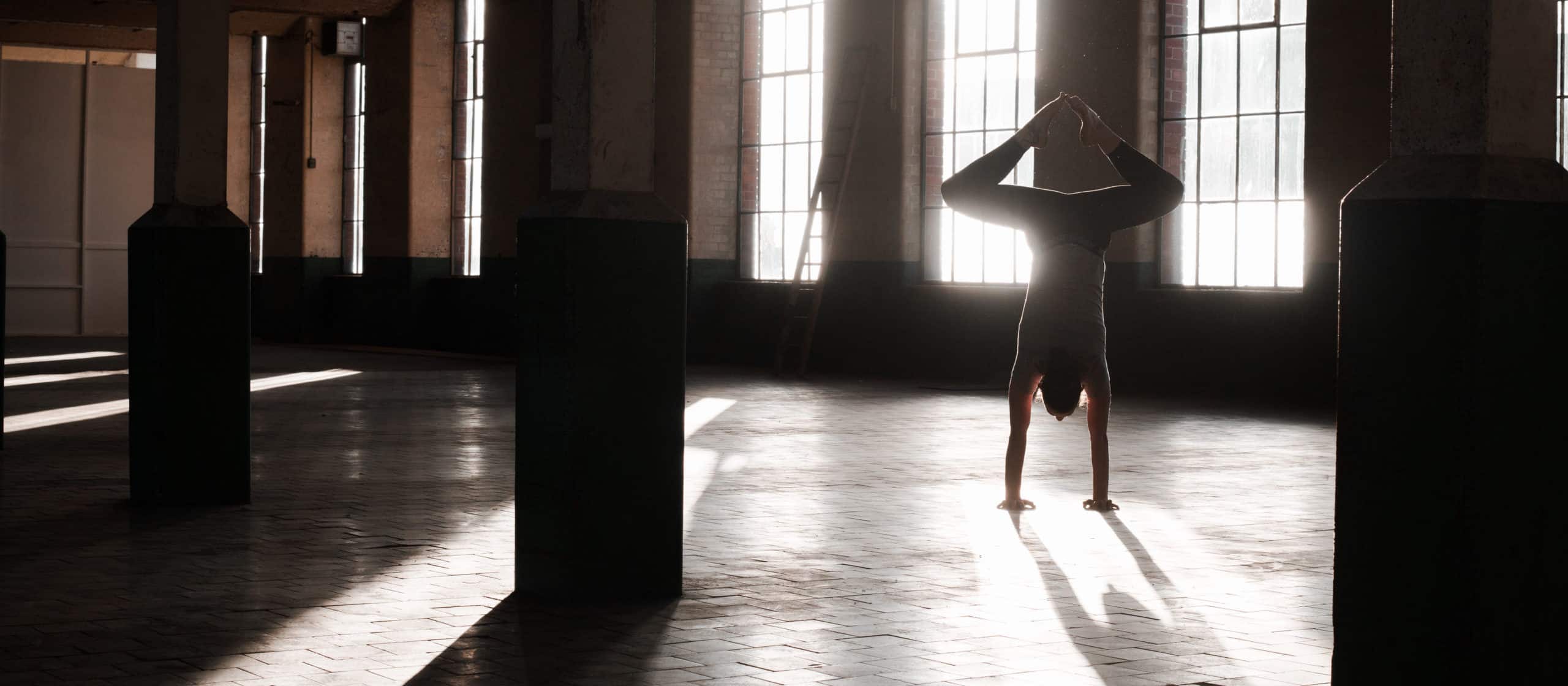Improving the length of time someone can hold a handstand is not only a common question we get, but also is necessary to learn more advanced handbalancing techniques. Yet there are diminishing returns in just solely chipping away at a longer straight handstand hold time. We believe there is more nuance to improving your hold, mainly in two areas, specific upper body strength and balancing skills.
Upper body strength for handstand endurance
Depending on where you are in your handbalancing journey will determine how best to go about building handstand endurance. For the green beginner, just getting time upside down on your hands will start the necessary tissue adaptation. In this early phase, we make use of walls for a majority of our upper body conditioning drills, which you can find in Push. Yet the odd stabilizer muscles won’t adapt until you actually try freestanding balance, especially when you start to try to hold past 30 seconds.
This is where specific upper body conditioning comes in. We recommend basing your strength training around your most common reason you lose your balance. Do your shoulders collapse forward? Do your fingers intensely squeeze the ground the whole time and then burn out? Then underbalance is causing you to fail, so ending your session with chest-to-wall holds with a focus on stacking your shoulders will help as you get more advanced then working on exercises like the tuck wall slide and the tuck handstands itself will help. What if you have the opposite problem, where your forearms fatigue and your lower back bends? Then super-setting your freestanding holds with back-to-wall heel pulls will give you the relevant strength in your arms. But what if it isn’t a specific muscle group, you just run out of steam? Then do sub-max holds with ample breaks to get additional volume in without compromising form. If you’re unsure what time intervals would be good for you, you can check out our bonus endurance section in Keep Pushing which has templates for all of these common problems.
One other technique to try here is if you are working on freestanding endurance you can set up in a chest to wall set up and then hold until technical failure, while freestanding just off the wall. Then, when you begin to struggle, rest the legs back on the wall reset the shoulders and get some additional time focusing on a hold with no balance component.
Adding variety in your handbalancing to improve your hold time
The strength training we mentioned above lays a solid foundation for handbalancing, and can get many people to the 30 second mark, but once that’s achieved we believe you should look at expanding your balance capacity. This can be done in a variety of ways, by working on different shapes, handstand presses, moving in shapes, and even handstand walks. This is also where, for many, the fun of handbalancing lies.
How does working a variety of handbalancing skills and shapes improve your overall hold time? Wouldn’t it just be simpler to continue to focus on fighting for extra seconds for your straight handstand? If we ignore the body stimulus and think about the stimulus to the balance instead, we can start to understand why variety is not only the spice of life, but also the key to handstand hold progress.
If you only do the same, straight handstand every time, you only get the same stimulus. If you start altering your hold, you get new exposed sensations and learn to counterbalance in more ways. There’s are so many elements to tweak with handstands, such as hand width, head position, leg shapes, entrances, and apparatus just to name a few.
We generally start people with shape changing. This can be something as simple as foot positioning, or the classic staple of straight to straddle handstands. The straddle is a very accessible shape that also lowers your center of gravity a bit, which some people might actually find easier to balance. Shifting into a tuck handstand is another shape that exposes your body to new sensations, as it will force you to find control in underbalance, which doubles as a great way to build upper back and finger strength. A perk of working these two shapes in particular is they also begin to lay the groundwork for handstand press variations. And even if press is not your focus, the weight shifts from the different shapes alone will build additional strength tangentially, which as we outlined in the first section of this article, is key for breaking handstand hold plateaus.
Another benefit of shifting your focus away from time to changing shapes is doing so can keep you from overthinking. If you attention is directed towards the shape change, you get out of the way of the fingers and balance doing the work. Your muscle memory that you’ve trained up to this point will take over, which in many cases can lead to quicker reactions and also longer holds.
Overall the key to longer holds is better endurance and strength, but building that strength doesn’t have to be boring. Instead it can be challenging in a whole different way with the introduction of new handstand shapes, and tangentially lay the foundations for more advanced handstand techniques like presses and the one-arm handstand. Our advice, don’t limit your progress by shackling yourself to only training the straight handstand for arbitrary amounts of time. Instead, broaden your horizons by introducing variety and complexity to your handbalancing practice sooner, and occasionally check in on your hold time. You might be surprised at how much it improves when you’re focused elsewhere.

